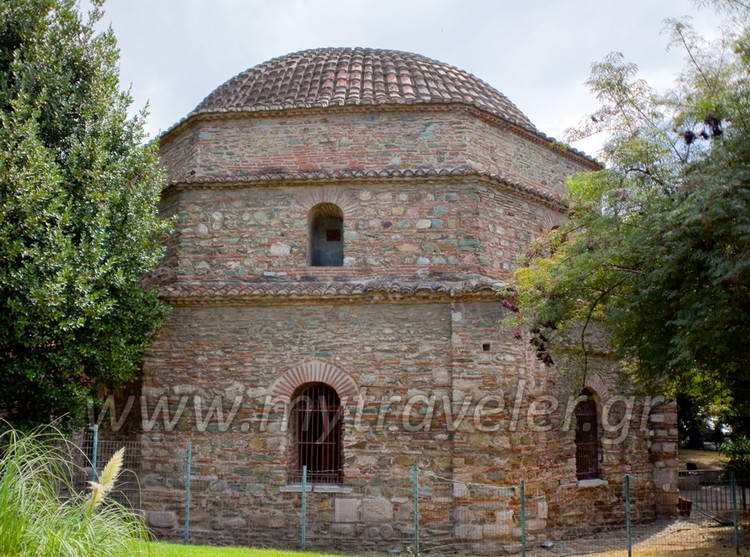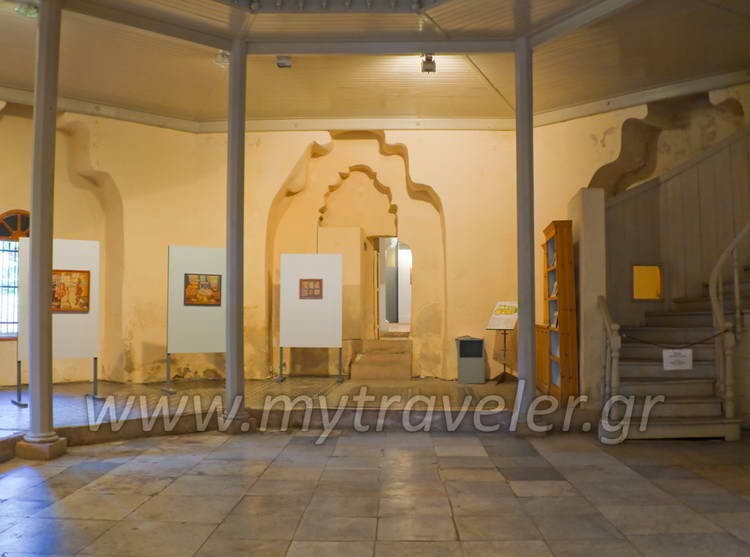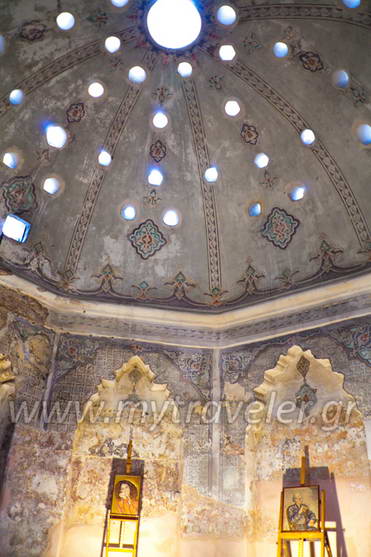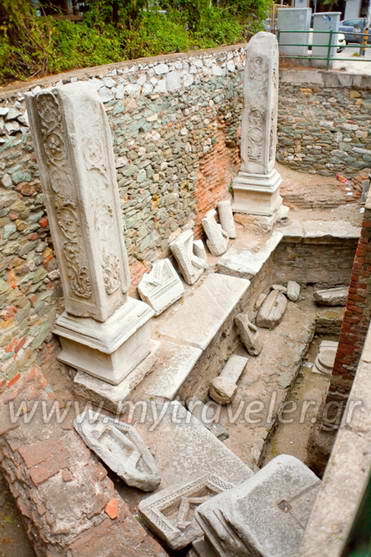Description
The BEY HAMAMI ("Paradeisos"Bath) was the first Ottoman bath-house to be built in Thessaloniki in 1444.
It is a double bath-house, with separate sections for men and women. Originally, there was no access between the two sections, which are laid out separately along two parallel axes. The entrance to the men's section, which is larger and more lavishly decorated, is on Egnatia street; the entrance to the women's, which is smaller and plainer, is on the north side.
The rooms in both sections are laid out in the traditional way: the large, cool anteroom is followed by the tepid room, leading to the main hot chamber, which has even hotter individual rooms. To the east, in contact with the hot chambers of both sections, is the long, vaulted hot-water cistern, with a furnace underneath, which was directly linked with the hypocaust.
There are marble basins in the hot chambers in both the women's and the men's bath, in the middle of each wall. Low marble benches along the bottom of the walls link the basins and served as seats. Two clay pipes built into the walls carried hot and cold water from the cistern to the basins. The furnace under the metal cauldron below the cistern heated the water, created steam and hot air, which was circulated through the hypocaust, the heating system under the marble floors. Vertical flues inside the walls carried the smoke away and at the same time warmed the masonry.
This large and labyrinthine structure is now used for art shows.
It is a double bath-house, with separate sections for men and women. Originally, there was no access between the two sections, which are laid out separately along two parallel axes. The entrance to the men's section, which is larger and more lavishly decorated, is on Egnatia street; the entrance to the women's, which is smaller and plainer, is on the north side.
The rooms in both sections are laid out in the traditional way: the large, cool anteroom is followed by the tepid room, leading to the main hot chamber, which has even hotter individual rooms. To the east, in contact with the hot chambers of both sections, is the long, vaulted hot-water cistern, with a furnace underneath, which was directly linked with the hypocaust.
There are marble basins in the hot chambers in both the women's and the men's bath, in the middle of each wall. Low marble benches along the bottom of the walls link the basins and served as seats. Two clay pipes built into the walls carried hot and cold water from the cistern to the basins. The furnace under the metal cauldron below the cistern heated the water, created steam and hot air, which was circulated through the hypocaust, the heating system under the marble floors. Vertical flues inside the walls carried the smoke away and at the same time warmed the masonry.
This large and labyrinthine structure is now used for art shows.
Published: 1 Jun. 2010
Add to favorite
- Information -
| GPS Coordinates |
| 40.635741 , 22.944981 |
| 40° 38' 8,6676"N , 22° 56' 41,9316"E |
Where to stay
accommodations located nearby
More Holiday Ideas
what else you can see here around



